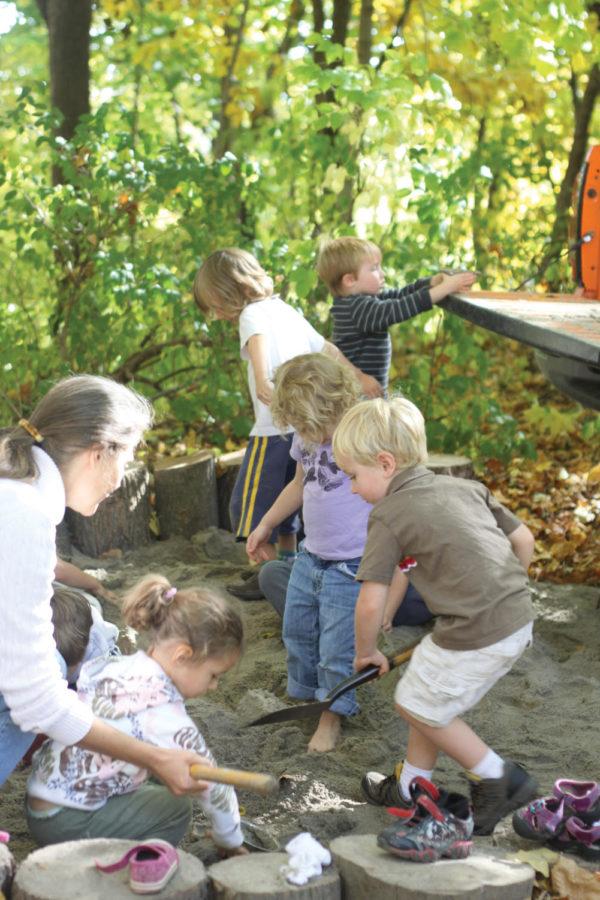Ames Prairie Flower Children’s Center strives to incorporate nature into childhood
Photo: Huiling Wu/Iowa State Daily
Kids build sand castles Wednesday at Camp Canwita. Prairie Flower Preschool provides kids different teaching techniques giving them opportunities to be active and learn by playing.
October 5, 2011
When preschoolers go to school at the Prairie Flower Children’s Center, they are immediately met with a feeling of nature. Soft blues, pastel pinks and deep green and blue colors cover the walls and tables.
Wool rugs are hung along a far wall with one large mat in the center of the floor, and the scent of pinecones and trees fill the room.
“We are striving for warmth,” said Delphine Douglass, head teacher and director of curriculum at the school, which integrates outdoor activities into nearly every day of the school year. “Children need warmth in their environment.”
The Prairie Flower Children’s Center is a Waldorf Early Childhood Association of North America preschool. WECAN is a small part of the Association of Waldorf Schools of North America.
With more than 900 schools in 83 countries ranging from preschool to high school, Waldorf schools were created to incorporate nature and to educate the “heart and the hands, as well as the head.”
Currently the Waldorf preschool in Ames, located at Camp Canwita on Duff Avenue, has nine to 10 children, some coming three days a week and some coming four. The children’s ages range from 3 to 5.
Everything at the school is natural, from the wooden and cloth toys to the homemade snacks the children help cook each day. The children also help polish the wooden toys and clean the school to learn respect for the things around them.
“Concepts come later for a child … for now learning comes from activities and experiences,” Douglass said. “The [children] want to move, want to touch, want to know.”
The Waldorf schools also try to help each child at their own pace.
“Being human is so much more than what you can score on a standardized test … an education that does not look at the temperament of a child is toxic,” Douglass said.
Iowa State teaches students in the College of Education, now part of the College of Human Sciences, that learning different teaching methods is good.
“We look at different ways to teach one thing,” said Caleb Miller, freshman in elementary education. “We learn to see how each kid sees things differently.”
According to the AWSNA website, 94 percent of Waldorf school graduates have continued on to higher education.
“I think it’s good to try new forms of education because the education system in the United States is not where it should be,” Miller said.
Miller believes math and reading levels need to rise in order for American children to remain competitive globally.
“The acorn cannot become an oak tree until it is ready,” said Douglass, who was a public school teacher for 20 years before she became a Waldorf teacher. “We need to revisit what childhood needs … once you have that figured out, then you are going to have a mighty oak.”

















